Nationality American Series Kitchen Table | Role Artist Name Carrie Weems | |
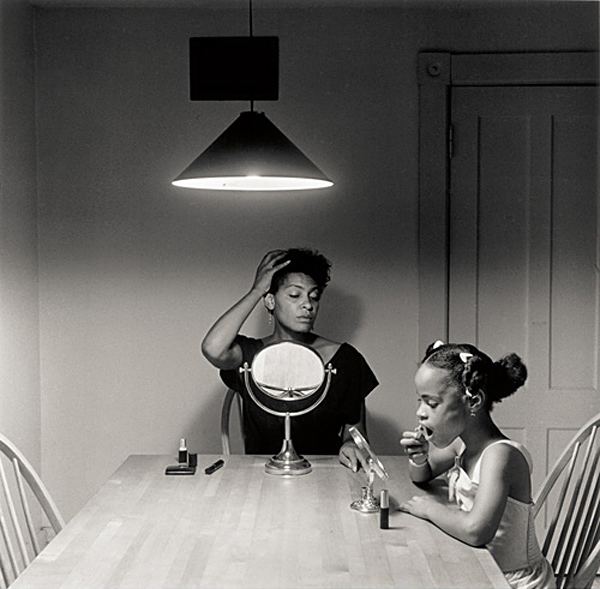 | ||
Artwork Man Reading Newspaper, from the series Kitchen Table Education California Institute of the Arts, University of California, Berkeley, University of California, San Diego Awards MacArthur Fellowship, The BET Honors Award for Visual Arts | ||
Carrie mae weems the kitchen table series exclusive art21
Carrie Mae Weems (born April 20, 1953) is an American artist who works with text, fabric, audio, digital images, and installation video but is best known for her work in the field of photography. Her award-winning photographs, films, and videos have been displayed in over 50 exhibitions in the United States and abroad and focus on serious issues that face African Americans today, such as racism, sexism, politics, and personal identity.
Contents
- Carrie mae weems the kitchen table series exclusive art21
- Carrie mae weems roaming art21 exclusive
- Early life and education
- Career and work
- Exhibitions
- Awards
- References
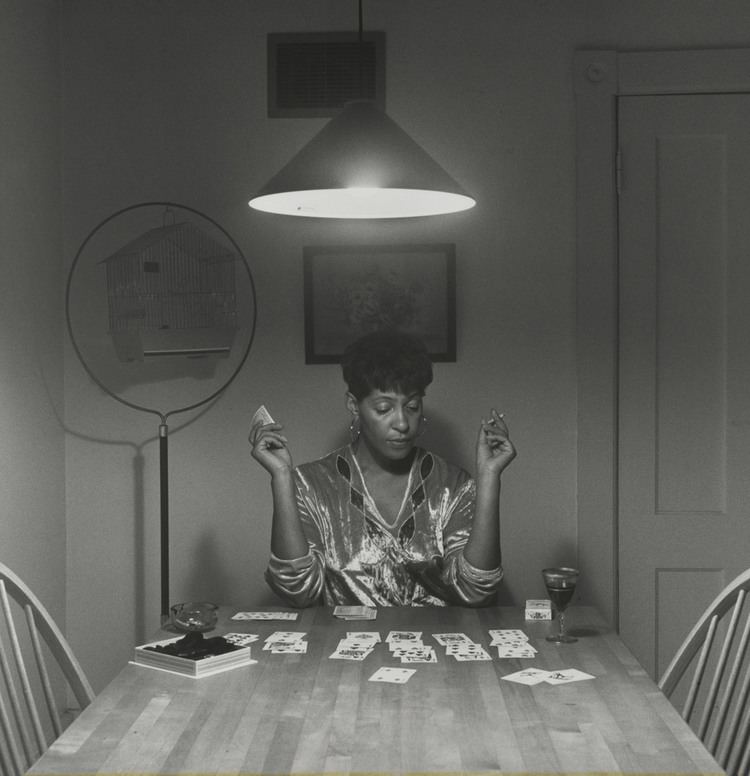
She has said, "Let me say that my primary concern in art, as in politics, is with the status and place of Afro-Americans in our country." More recently however, she expressed that “Black experience is not really the main point; rather, complex, dimensional, human experience and social inclusion ... is the real point.”
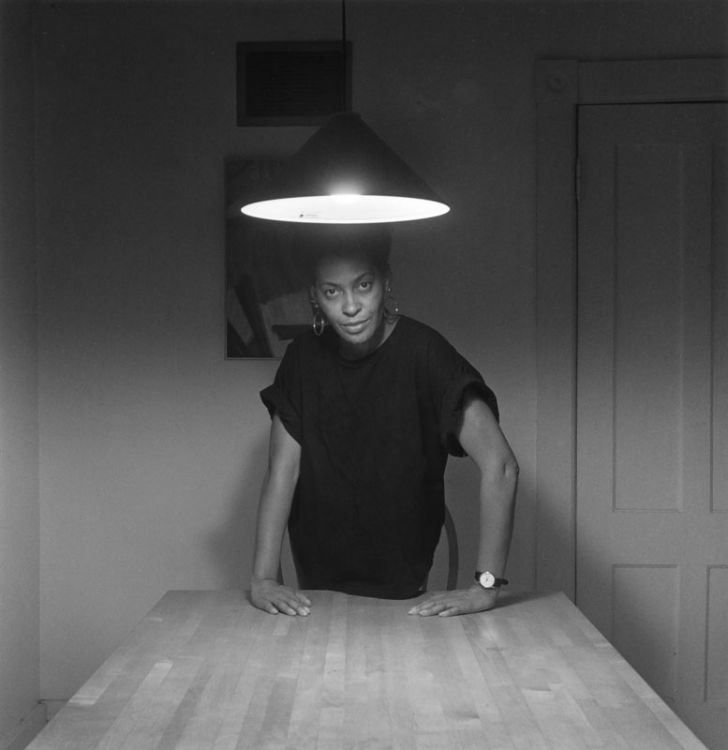
Carrie mae weems roaming art21 exclusive
Early life and education

Weems was born in Portland, Oregon, in 1953, the second of seven children to Carrie Polk and Myrlie Weems. She began participating in dance and street theater in 1965. At the age of 16 she gave birth to her first and only child, a daughter named Faith C. Weems. Later that year she moved out of her parent's home and soon relocated to San Francisco to study modern dance with Anna Halprin at a workshop Halprin had started with several other dancers, as well as the artists John Cage and Robert Morris. She decided to continue her arts schooling and attended the California Institute of the Arts, Valencia, graduating at the age of 28 with her B.A. She received her MFA from the University of California, San Diego. Weems also participated in the folklore graduate program at the University of California, Berkeley.
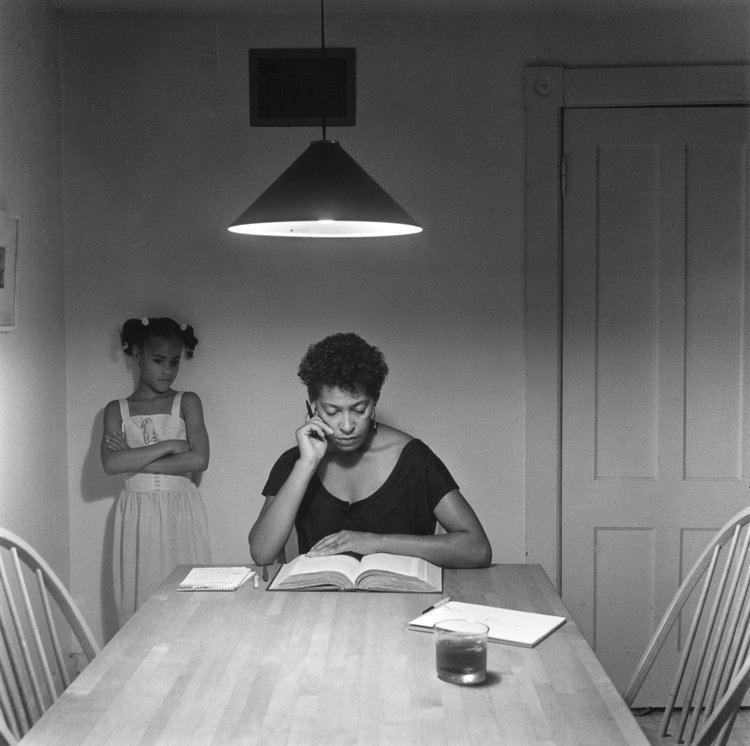
While in her early twenties, Carrie Mae Weems was politically active in the labor movement as a union organizer. Her first camera, which she received as a birthday gift, was used for this work before being used for artistic purposes. She was inspired to pursue photography after she came across The Black Photography Annual, a book of images by African-American photographers including Shawn Walker, Beuford Smith, Anthony Barboza, Ming Smith, Adger Cowans, and Roy DeCarava, who Weems found inspiring. This led her to New York City, and the Studio Museum in Harlem, where she began to meet other artists and photographers such as Coreen Simpson and Frank Stewart, and they began to form a community. In 1976 Weems took a photography class at the Museum taught by Dawoud Bey. She returned to San Francisco, but lived bi-coastally and was involved with the Studio Museum and a community of photographers in New York.
Career and work
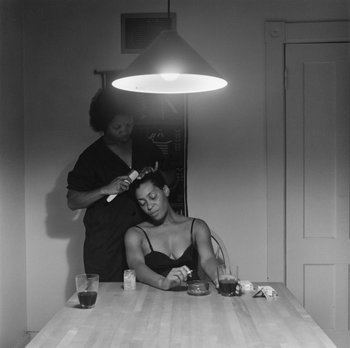
In 1983, Carrie Mae Weems completed her first collection of photographs, text, and spoken word, called Family Pictures and Stories. The images told the story of her family, and she has said that in this project she was trying to explore the movement of black families out of the South and into the North, using her family as a model for the larger theme. Her next series, called Ain't Jokin', was completed in 1988. It focused on racial jokes and internalized racism. Another series called American Icons, completed in 1989, also focused on racism. Weems has said that throughout the 1980s she was turning away from the documentary photography genre, instead "creating representations that appeared to be documents but were in fact staged" and also "incorporating text, using multiples images, diptychs and triptychs, and constructing narratives." Sexism was the next focal point for her. It was the topic of one of her most well known collections called The Kitchen Table series which was completed in 1990. About Kitchen Table and Family Pictures and Stories, Weems has said, "I use my own constructed image as a vehicle for questioning ideas about the role of tradition, the nature of family, monogamy, polygamy, relationships between men and women, between women and their children, and between women and other women—underscoring the critical problems and the possible resolves." She has expressed disbelief and concern about the exclusion of images of the black community, particularly black women, from the popular media, and aims to represent these excluded subjects and speak to their experience through her work. Weems has also reflected on the themes and inspirations of her work as a whole, saying,
...from the very beginning, I've been interested in the idea of power and the consequences of power; relationships are made and articulated through power. Another thing that's interesting about the early work is that even though I've been engaged in the idea of autobiography, other ideas have been more important: the role of narrative, the social levels of humor, the deconstruction of documentary, the construction of history, the use of text, storytelling, performance, and the role of memory have all been more central to my thinking than autobiography.
Other series created by Weems include: the Sea Island Series (1991-92), the Africa Series (1993), From Here I Saw What Happened and I Cried (1995-96), Who What When Where (1998), Ritual & Revolution (1998), the Louisiana Project (2003), Roaming (2006), and the Museum Series, which she began in 2007. Her most recent project, Grace Notes: Reflections for Now, is a multimedia performance that explores "the role of grace in the pursuit of democracy."
In her almost 30-year career, Carrie Mae Weems has won numerous awards. She was named Photographer of the Year by the Friends of Photography. In 2005, she was awarded the Distinguished Photographer's Award in recognition of her significant contributions to the world of photography. Her talents have also been recognized by numerous colleges, including Harvard University and Wellesley College, with fellowships, artist-in-residence and visiting professor positions. She taught photography at Hampshire College in the late 1980s. She was awarded a MacArthur Foundation Fellowship in 2013. In 2015 Weems was named a Ford Foundation Art of Change Fellow. In September 2015, the Hutchins Center for African & African American Research presented her with the W. E. B. Du Bois Medal.
The first comprehensive retrospective of her work opened in September 2012 at the Frist Center for the Visual Arts in Nashville, Tennessee, as a part of the center's exhibition Carrie Mae Weems: Three Decades of Photography and Video. Curated by Katie Delmez, the exhibition ran until January 13, 2013 and later traveled to Portland Art Museum, Cleveland Museum of Art, and the Cantor Center for Visual Arts. The 30-year retrospective exhibition opened in January 2014 at the Solomon R. Guggenheim Museum in New York City. Weems' work returned to the Frist in October 2013 as a part of the center's 30 Americans gallery, alongside black artists ranging from Jean-Michel Basquiat to Kehinde Wiley.
Weems' work is included in collections all over the world including the Metropolitan Museum of Art and the Museum of Modern Art ([1] ), New York; the Museum of Fine Arts, Houston ([2] ); the Minneapolis Institute of Arts ([3] ), the Cleveland Museum of Art ([4] ), the Portland Art Museum ([5] ), The Tate Museum In London ( [6])and the Museum of Contemporary Art, Los Angeles ( [7]). Weems has been represented by Jack Shainman Gallery since 2008 ([8] ).
A full-color, visual book, titled Carrie Mae Weems, was published by Yale University Press in October 2012. The book offers the first major survey of Weems' career and includes a collection of essays from leading and emerging scholars in addition to over 200 of Weems' most important works. The book is currently out of print
Weems lives in Brooklyn and Syracuse, New York, with her husband Jeffrey Hoone. She continues to produce art that provides social commentary on the experiences of people of color, especially black women, in America.
Exhibitions
Solo presentations of her work at museums have included exhibitions at:
